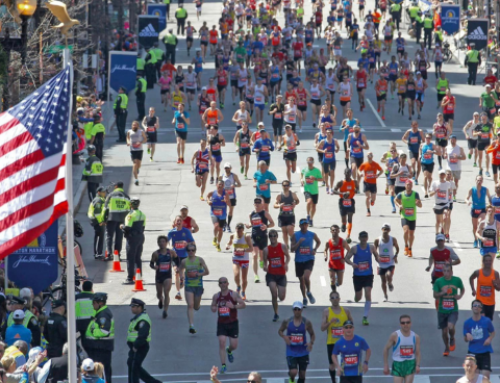Goal-Setting Tips For Athletes From Unexpected Sources
Having a goal is great. But having a plan to achieve that goal is what really matters. (See 4 Motivational Tips to Help You Achieve Your Goals.) When many elite athletes set targets for themselves, they also use winning sports psychology strategies to hit them. (Check out Goal-Oriented Training: Five Keys to Athletic Success.) Below are two strategies you can use to help you set—and reach—your highest marks.
Get Your GOTE On
Many years ago, in a book for actors entitled Acting One, a writer named Robert Cohen put forth ideas that have proven remarkably helpful to people of all walks of life. His strategy was known by the acronym GOTE, which stands for goals, obstacles, tactics and expectations. Actors used those four factors to learn more about the characters they play. Athletes can use the same principles to clearly identify what they want to do, and how they can do it.
- Goals: Ask yourself: Exactly what do you want to accomplish? Use as much detail as possible.
- Obstacles: What can stop you from achieving your goal? Answers can range from potential personal problems to mental, physical, situational or even economic barriers. Identify every possible obstacle you can think of. Also give some thought to who might be willing to work with you—or against you.
- Tactics: What methods can you use to achieve your goals? To get stronger, you could lift weights or do bodyweight exercises—or any number of other things. This is where you need to weigh possible plans of action, thinking about both physical and mental steps you can take to reach your goals.
- Expectations: When do you expect to complete your plan of action, overcome the obstacles and reach your goal? Set time frames for completion; consider ways you will handle obstacles when they arise; and list any sub-goals you might need to set in order to reach your overall goal and any thoughts you have about what the process will be like.
Know Your Core Priority
Chip and Dan Heath wrote a book about ideas called Made to Stick, which asked readers to examine the reasons they set goals in the first place. The book suggests identifying a core priority that will underlie your plan of action, and the reason behind the goals you set. Why is this important? Since things rarely go as planned, you want to make sure you stay true to the real reason you set those goals in the first place.
Identifying a core priority helps you get and stay motivated to achieve your goals. It also helps you effectively make decisions that will keep you on track to reach them. You don’t just “do,” you figure out why you are doing. For example: are you playing because you want to enjoy your sport experience, reach your full potential, challenge yourself and test your limits, or do whatever is needed for the good of the team? What is the real reason behind your effort? Identifying it will help you better understand what you should be doing—and why it matters.
RECOMMENDED FOR YOU
MOST POPULAR
Goal-Setting Tips For Athletes From Unexpected Sources
Having a goal is great. But having a plan to achieve that goal is what really matters. (See 4 Motivational Tips to Help You Achieve Your Goals.) When many elite athletes set targets for themselves, they also use winning sports psychology strategies to hit them. (Check out Goal-Oriented Training: Five Keys to Athletic Success.) Below are two strategies you can use to help you set—and reach—your highest marks.
Get Your GOTE On
Many years ago, in a book for actors entitled Acting One, a writer named Robert Cohen put forth ideas that have proven remarkably helpful to people of all walks of life. His strategy was known by the acronym GOTE, which stands for goals, obstacles, tactics and expectations. Actors used those four factors to learn more about the characters they play. Athletes can use the same principles to clearly identify what they want to do, and how they can do it.
- Goals: Ask yourself: Exactly what do you want to accomplish? Use as much detail as possible.
- Obstacles: What can stop you from achieving your goal? Answers can range from potential personal problems to mental, physical, situational or even economic barriers. Identify every possible obstacle you can think of. Also give some thought to who might be willing to work with you—or against you.
- Tactics: What methods can you use to achieve your goals? To get stronger, you could lift weights or do bodyweight exercises—or any number of other things. This is where you need to weigh possible plans of action, thinking about both physical and mental steps you can take to reach your goals.
- Expectations: When do you expect to complete your plan of action, overcome the obstacles and reach your goal? Set time frames for completion; consider ways you will handle obstacles when they arise; and list any sub-goals you might need to set in order to reach your overall goal and any thoughts you have about what the process will be like.
Know Your Core Priority
Chip and Dan Heath wrote a book about ideas called Made to Stick, which asked readers to examine the reasons they set goals in the first place. The book suggests identifying a core priority that will underlie your plan of action, and the reason behind the goals you set. Why is this important? Since things rarely go as planned, you want to make sure you stay true to the real reason you set those goals in the first place.
Identifying a core priority helps you get and stay motivated to achieve your goals. It also helps you effectively make decisions that will keep you on track to reach them. You don’t just “do,” you figure out why you are doing. For example: are you playing because you want to enjoy your sport experience, reach your full potential, challenge yourself and test your limits, or do whatever is needed for the good of the team? What is the real reason behind your effort? Identifying it will help you better understand what you should be doing—and why it matters.













